第3章 CHAPTER I.(2)
The route from Korosko across the Nubian desert cuts off the chord of an arc made by the great westerly bend of the Nile. This chord is about 230 miles in length. Throughout this barren desert there is no water, except at the half-way station, Moorahd (from moorra, bitter); this, although salt and bitter, is relished by camels. During the hot season in which we unfortunately travelled, the heat was intense, the thermometer ranging from 106degrees to 114 degrees Fahr. in the shade. The parching blast of the simoom was of such exhausting power, that the water rapidly evaporated from the closed water-skins. It was, therefore, necessary to save the supply by a forced march of seven days, in which period we were to accomplish the distance, and to reach Abou Hammed, on the southern bend of the welcome Nile.
During the cool months, from November until February, the desert journey is not disagreeable; but the vast area of glowing sand exposed to the scorching sun of summer, in addition to the withering breath of the simoom, renders the forced march of 230miles in seven days, at two and a half miles per hour, the most fatiguing journey that can be endured.
Farewell to the Nile! We turned our backs upon the life-giving river, and our caravan commenced the silent desert march.
A few hours from Korosko the misery of the scene surpassed description. Glowing like a furnace, the vast extent of yellow sand stretched to the horizon. Rows of broken hills, all of volcanic origin, broke the flat plain. Conical tumuli of volcanic slag here and there rose to the height of several hundred feet, and in the far distance resembled the Pyramids of Lower Egypt--doubtless they were the models for that ancient and everlasting architecture; hills of black basalt jutted out from the barren base of sand, and the molten air quivered on the overheated surface of the fearful desert. 114 degrees Fahr. in the shade under the water-skins; 137 degrees in the sun.
Noiselessly the spongy tread of the camels crept along the sand--the only sound was the rattle of some loosely secured baggage of their packs. The Arab camel-drivers followed silently at intervals, and hour by hour we struck deeper into the solitude of the Nubian desert.
We entered a dead level plain of orange-coloured sand, surrounded by pyramidical hills: the surface was strewn with objects resembling cannon shot and grape of all sizes from a 32-pounder downwards--the spot looked like the old battle-field of some infernal region; rocks glowing with heat--not a vestige of vegetation--barren, withering desolation.--The slow rocking step of the camels was most irksome, and despite the heat, Idismounted to examine the Satanic bombs and cannon shot. Many of them were as perfectly round as though cast in a mould, others were egg-shaped, and all were hollow. With some difficulty Ibroke them, and found them to contain a bright red sand: they were, in fact, volcanic bombs that had been formed by the ejection of molten lava to a great height from active volcanoes;these had become globular in falling, and, having cooled before they reached the earth, they retained their forms as hard spherical bodies, precisely resembling cannon shot. The exterior was brown, and appeared to be rich in iron. The smaller specimens were the more perfect spheres, as they cooled quickly, but many of the heavier masses had evidently reached the earth when only half solidified, and had collapsed upon falling. The sandy plain was covered with such vestiges of volcanic action, and the infernal bombs lay as imperishable relics of a hail-storm such as may have destroyed Sodom and Gomorrah.
Passing through this wretched solitude we entered upon a scene of surpassing desolation. Far as the eye could reach were waves like a stormy sea, grey, cold-looking waves in the burning heat; but no drop of water: it appeared as though a sudden curse had turned a raging sea to stone. The simoom blew over this horrible wilderness, and drifted the hot sand into the crevices of the rocks, and the camels drooped their heads before the suffocating wind; but still the caravan noiselessly crept along over the rocky undulations, until the stormy sea was passed: once more we were upon a boundless plain of sand and pebbles.
Here every now and then we discovered withered melons (Cucumis colocynthis); the leaves had long since disappeared, and the shrivelled stalks were brittle as glass. They proved that even the desert had a season of life, however short; but the desert fruits were bitter. So intensely bitter was the dry white interior of these melons, that it exactly resembled quinine in taste; when rubbed between the fingers, it became a fine white powder. The Arabs use this medicinally; a small piece placed in a cup of milk, and allowed to stand for a few hours, renders the draught a strong aperient. The sun--that relentless persecutor of the desert traveller--sank behind the western hills, and the long wished for night arrived; cool, delicious night! the thermometer 78 degrees Fahr. a difference of 36 degrees between the shade of day.
The guide commanded the caravan,--he was the desert pilot, and no one dared question his directions; he ordered a halt for TWOHOURS' rest. This was the usual stage and halting-place by the side of a perpendicular rock, the base of which was strewn thick with camel's dung; this excellent fuel soon produced a blazing fire, the coffee began to boil, and fowls were roasting for a hasty dinner. A short snatch of sleep upon the sand, and the voice of the guide again disturbed us. The camels had not been unloaded, but had lain down to rest with their packs, and had thus eaten their feed of dhurra (Sorghum vulgare) from a mat. In a few minutes we started, once more the silent and monotonous desert march.